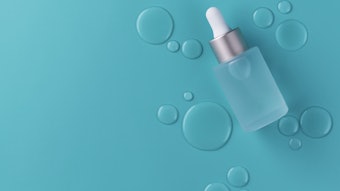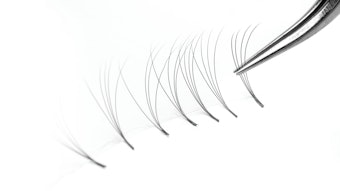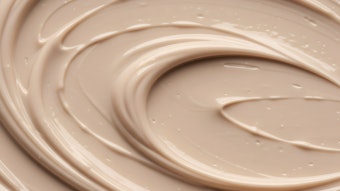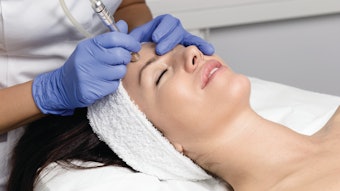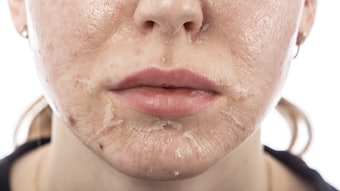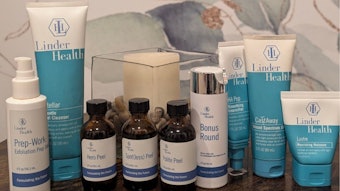The National Rosacea Society (NRS) announced the estimated number of Americans now suffering from rosacea has increased to 16 million, while untold millions more may be in temporary remission. April is designated as Rosacea Awareness Month by the NRS to alert the public to the warning signs of this red-faced, acne-like and often life-disruptive disorder, and the importance of seeking early diagnosis and treatment.
“Many people assume that rosacea is simply a sunburn or complexion problem that will eventually go away, and fail to realize they have a chronic condition that may get worse without medical treatment and lifestyle modifications,” said Dr. Jonathan Wilkin, chairman of the NRS medical advisory board. He noted the steady growth and aging of the population during the past decade have significantly raised the incidence of this widespread but poorly understood disorder, and its effects are now in full force among the massive numbers in the baby boom generation.
The NRS had previously estimated the number of rosacea sufferers in the United States at 14 million, and recent epidemiological studies have also found the incidence may be much higher. Despite its prevalence, however, most Americans are unaware of its signs and symptoms, and medical data suggest that only a small percentage of rosacea sufferers are being treated.
“It’s especially important for people to know about rosacea, not only because of its potential for the development of other skin and serious eye effects, but its negative impact on personal appearance can be even more devastating to their emotional, social and professional lives,” Dr. Wilkin said.
In a NRS surveys of more than 1,200 rosacea patients, more than 76% said their condition had lowered their self-confidence and self-esteem, and 41% said it caused them to avoid public contact or cancel social engagements. Among those with severe symptoms, nearly 70% said it had adversely affected their professional lives, and nearly 30% said they even missed work because of its effect on their personal appearance.
Adding to the embarrassment is a common myth that rosacea sufferers, who often have a red face and nose, are heavy drinkers. In fact, while alcohol may aggravate the condition, the symptoms can be just as severe in a teetotaler. Another common misconception is that rosacea is caused by poor hygiene, while in reality it is unrelated to personal cleanliness.
Rosacea typically begins between the ages of 30 and 60 as a redness on the cheeks, nose, chin or forehead that comes and goes. Over time, the redness tends to become ruddier and more persistent, and visible blood vessels may appear. Left untreated, bumps and pimples often develop, and in severe cases—especially in men—the nose may become swollen and bumpy from excess tissue. This is the condition, called phymatous rosacea, that gave the comedian W.C. Fields his trademark red bulbous nose.
In many rosacea sufferers, the eyes are also affected, feeling irritated and appearing watery or bloodshot. Severe cases of this condition, known as ocular rosacea, can lead to corneal damage and reduced vision.
In a recent study, Dr. Maeve McAleer and colleagues at the School of Public Health and Population Science, University College, Dublin, found that 14.4% of 1,000 subjects examined in Ireland had rosacea. Moreover, in a 1989 study of 800 office workers in Sweden, the prevalence of rosacea was 10%, including 14% in women and 6% in men.
“While these incidence rates are very high, rosacea is more commonly seen in fair-skinned individuals, and an assessment of rosacea in the U.S. must take into account the diversity of its population,” Dr. Wilkin said.
In a study of photos of 2,933 random women volunteers in the U.S., presented by Dr. Alexa Boer Kimball of Harvard Medical School at an NRS research workshop, the rosacea prevalence rate in all of the women regardless of ethnic background was 9.6%. At the same time, the prevalence rate in the Caucasian women alone was 16%, comparable to the rates found in the studies in Ireland and Sweden.
“In actuality, all of these studies may understate the true incidence of rosacea because they examined only the presence of signs and symptoms at the time of the study, while rosacea is often a chronic underlying condition whose outward signs and symptoms are characterized by relapses and remissions,” Dr. Wilkin said. “Thus, at any given time, millions of additional rosacea sufferers may simply be in temporary remission.”
Among the most famous rosacea sufferers is former President Bill Clinton, whose doctors disclosed that he has this condition in The New York Times. Others reported to have suffered from the disorder include Princess Diana, financier J.P. Morgan and the Dutch painter Rembrandt.
While the cause of rosacea is unknown, a vast array of lifestyle and environmental factors can trigger flare-ups in various rosacea sufferers. Common rosacea triggers include sun exposure, emotional stress, hot or cold weather, wind, heavy exercise, alcohol, spicy foods, heated beverages, humidity, certain skin-care products and many others.
“The good news is that although the incidence of rosacea has increased in the United States, medical therapy is available to bring many aspects of rosacea under control,” Dr. Wilkin said. Individuals with any of the following warning signs of rosacea are urged to see a dermatologist for diagnosis and appropriate medical treatment:
- Redness on the cheeks, nose, chin or forehead
- Small visible blood vessels on the face
- Bumps or pimples on the face
- Watery or irritated eyes
During April and throughout the year, people who suspect they may have rosacea can visit the NRS Web site at www.rosacea.org to obtain comprehensive information on the disorder.
